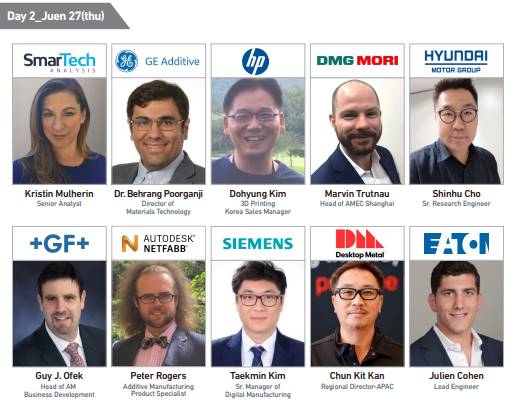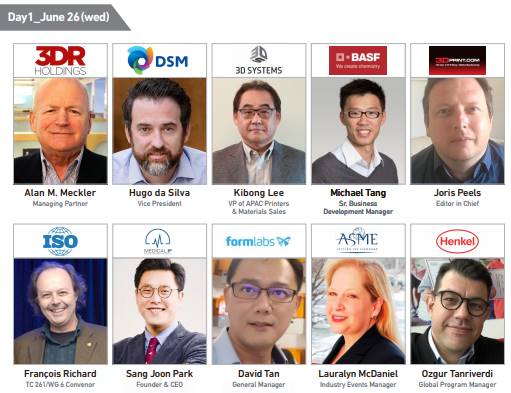Why Did Global Chemical Giants Jump into 3D Printing Industry?
There has been worldwide growth in the 3D printing industry since former US President Barack Obama addressed the importance of 3D printing, calling for industry growth in the United States in 2013. According to Wohlers Report and a McKinsey Report, we have witnessed annual growth rate of 25% and can expect an overall business impact of USD 100 billion by 2025.
In South Korea, hundreds of SMEs have entered 3D printing or the 3D printing service industry and this has become one of the key technologies in the fourth industrial revolution. Six years from now, how has the Asian region, especially, South Korea’s situation changed?
As with all new technologies, the 3D printing industry in South Korea has also undergone ups and downs. The ‘Maker Movement’, which originated from the United States, did not grow in major Asian countries such as China, Korea and Japan due to cultural differences. Even though industrial demand for aerospace, automotive, medical, dental and jewelry has exploded in Asian region, many domestic 3D printer manufacturers, especially of desktop FDM printers, have closed down due to insufficient demand.

Then, how did global corporations react to the 3D Printing revolution?
In short, multinational chemical giants chose 3D printing materials instead of hardware or software, pursuing partnerships with global equipment manufacturers and software companies to co-provide one-stop solutions.
One example, BASF, one of the world’s largest chemical companies, entered the 3D printing materials industry through its subsidiary in September 2017. In 2018, BASF acquired Advanc3D Materials, Setup Performance, and Dutch filament manufacturing company Innofil3D, which are major materials companies. BASF also partnered with global 3D printing companies such as EOS and Materialise pioneering various sales channels.
Henkel, a German chemical and consumer goods company with 143 years of history, has also entered the 3D printing materials business. Henkel does have 3D printer products (Loctite) developed in-house, but Henkel’s main fields are various industrial resin materials, post-processing, and adhesives. Henkel also seeks synergies through collaboration with major manufacturers such as Carbon and HP.

American multinational chemical corporation, Dow Chemical, has developed the world’s first liquid silicone rubber material for 3D printing. Dow offers new possibilities for the 3D printing industry by combining the advantages of silicon materials such as heat resistance, cold resistance, UV resistance, elastic restoration with the shape properties of rubber materials. Dow also partners with Germany’s German RepRap to expand into various manufacturing fields.
Royal DSM with a history of more than 25 years in additive manufacturing also entered 3D printing material market. DSM has developed polymer resins and industrial filaments that can be used for various 3D printing methods such as FDM, SLA, DLP, etc., and is targeting global markets through partnerships with global equipment manufacturers and platform companies such as Ultimaker and Origin. Additionally, Solvay, Arkema, Sabic and Evonik have also invested in entering the 3D printing market.

GE Additive, one of the world’s largest suppliers of metal 3D printing equipment and services, employs, currently, more than 1,000 scientists and engineers working on metal materials. GE Additive offers a full range of metal powder, 3D printing equipment and support services including various metal materials as titanium, cobalt, nickel, and copper. GE is taking full advantage of this technology to build aircraft and expects to save $3 billion to $5 billion in manufacturing costs over the next decade.

More stories? You can meet all the above mentioned global industry experts at Inside 3D Printing Seoul taking place on June 26-28 at KINTEX (Seoul), South Korea. Inside 3D printing Seoul is Asia’s premier additive technology event with 10,000 visitors, 100 exhibitors and 40 world-class speakers from 28 countries.
For more information, you can visit our official website or contact Inside 3D Printing Secretariat (inside3dprinting@kintex.com).
Subscribe to Our Email Newsletter
Stay up-to-date on all the latest news from the 3D printing industry and receive information and offers from third party vendors.
Print Services
Upload your 3D Models and get them printed quickly and efficiently.
You May Also Like
Havaianas Collaborates with Zellerfeld to Launch 3D Printed Flip-Flops
The shoe of the summer is undoubtedly the flip-flop. Easy on, easy off, your feet won’t get sweaty because there’s not much material, and they’re available in a veritable rainbow...
UCLA Researchers Develop 3D Printed Pen that May Help Detect Parkinson’s Disease
Diagnosing Parkinson’s disease is difficult. Often, early symptoms of the progressive neurological condition may be overlooked, or mistaken for signs of aging. Early diagnosis can help save lives and improve...
Printing Money Episode 30: Q1 2025 Public 3D Printing Earnings Review with Troy Jensen, Cantor Fitzgerald
Printing Money is back with Episode 30, and it’s that quarterly time, so we are happy and thankful to welcome back Troy Jensen (Managing Director, Cantor Fitzgerald) to review the...
Heating Up: 3D Systems’ Scott Green Discusses 3D Printing’s Potential in the Data Center Industry
The relentless rise of NVIDIA, the steadily increasing pledges of major private and public investments in national infrastructure projects around the world, and the general cultural obsession with AI have...
































